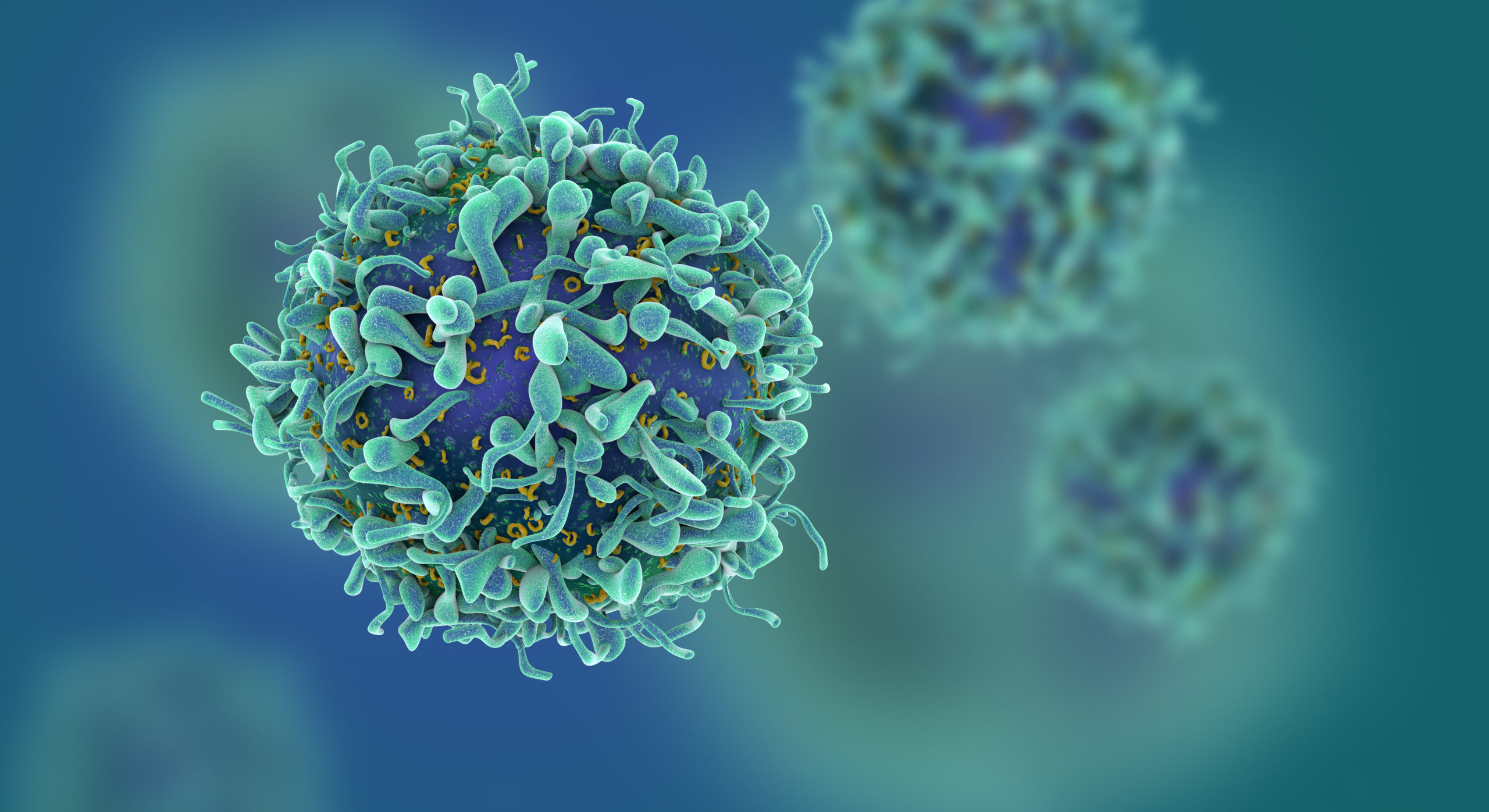This story was published in the November 2023 issue of the Breakthroughs newsletter.
More than 100 million people in the U.S. experience various types of allergies each year, and allergies are the sixth leading cause of chronic illness in the country, according to the Asthma and Allergy Foundation of America.
Though treatments for allergies have historically been slow-going, recent research by Feinberg investigators has provided new hope for the future of allergy management.
Testing a Patch

In May, Melanie Makhija, MD, associate professor of Pediatrics in the Division of Allergy and Immunology, was co-author on a study published in the New England Journal of Medicine. The study found that a newly developed “peanut patch” is a safe and effective way to desensitize toddlers allergic to peanuts.
While the patch does not cure peanut allergies, it can desensitize the child’s body to peanut protein so allergic reactions due to accidental exposure may be less severe, Makhija said.
Historically, few treatment options were available for children with peanut allergies. While an oral immunotherapy product currently exists for children over four years of age, it is not yet approved for children under four years. It is also not for everyone because of restrictions with exercise after dosing and because of the risk of reactions and side effects including gastrointestinal issues, Makhija said.
“Until 2020 when the FDA approved oral immunotherapy, there were no approved treatments for peanut allergy. We asked patients to avoid peanuts — even potential cross-contamination — gave them epinephrine prescriptions and emergency action plans. Other than that, we didn’t have much to offer,” Makhija said.
In the study, more than 300 toddlers aged one to three years who have peanut allergies received a peanut patch loaded with 250 micrograms of peanut protein or a placebo once daily for a year.
At the end of one year, the children ate increasing doses of peanut protein until they exhibited signs of an allergic reaction. Just under two-thirds of the children who received the peanut patch could tolerate at least 1,000 milligrams of peanut protein — the equivalent of three to four peanuts — which was significantly more than children who received a placebo, according to the study.
“The company that makes the peanut patch is continuing to study the peanut patch in older children, and I hope that it will be approved as a treatment soon,” Makhija said.
Utilizing Cancer Drugs
A new drug used to treat cancer is also being tested to see if it can prevent allergic reactions to peanuts, according to a study published in the Journal of Clinical Investigation.
The drug, acalabrutinib, has been approved by the FDA to treat lymphomas by inhibiting Bruton’s tyrosine kinase (BTK), an enzyme inside cells also known to be necessary during allergic reactions, including anaphylaxis.
After discovering that patients with food allergies had reduced skin test responses to those foods while taking the drug, investigators tested the drug’s ability to prevent reactions to peanut ingestion in 10 adults with peanut allergies.
After receiving four doses of acalabrutinib over two days, seven of the patients tolerated the maximum 4,044 milligrams of peanut protein without having an allergic reaction; the other 3 patients’ peanut tolerance increased between 32- and 217-fold compared to baseline testing.
While the study population was small, the results suggest acalabrutinib may have a clinical use in preventing anaphylaxis in people with peanut allergies, said Bruce Bochner, MD, professor emeritus of Medicine in the Division of Allergy and Immunology and a co-author of the study.

“Seven out of ten of these patients sailed through the peanut ingestion test without any reaction whatsoever after taking this drug. And for the three others, their threshold for reacting markedly improved,” Bochner said. “These subjects went from reacting to a fraction of a peanut to tolerating up to about 20 peanuts. Without any hyperbole, there is no drug ever tested that works this well to protect somebody from anaphylaxis.”
The study was led by Melanie Dispenza, MD, PhD, assistant professor of Medicine at the Johns Hopkins University School of Medicine. Dispenza completed her residency in internal medicine and fellowship in allergy and immunology in the Physician-Scientist Training Program at Feinberg and trained under Bochner.
“This finding is groundbreaking for the field of allergy and could dramatically change the way we treat food and drug allergies,” Dispenza said.
Looking at Antibody Treatments
In her laboratory, Cecilia Berin, PhD, the Bunning Professor of Food Allergy Research, studies the immune basis of allergy and tolerance to foods. In a recent editorial published in the Journal of Experimental Medicine, Berin discusses the current state of treatments for IgE-mediated food allergies (which currently affect roughly eight percent of the U.S. population), targeting type 2 immune responses and next steps for food allergy research and treatment development.
IgE, a type of antibody, binds to specific allergens to activate mast cells or basophils, types of cells that induce inflammation and defend the body from pollen, peanuts, or other types of allergens.

“Generally, what indicates an IgE-mediated food allergy is timing, that it occurs within minutes up to two hours after exposure,” Berin said. “The symptoms are quite standard: hives, respiratory symptoms, nausea and vomiting. Physicians will administer a couple of different tests to check for IgE antibodies. One method is skin testing, where they put a small amount of the food allergen into the skin, and it causes a wheal and flare reaction if there are IgE antibodies present. There are also blood tests that can detect IgE antibodies specific to different foods.”
In Berin’s editorial, she notes the need for more precision therapies for IgE-mediated allergies. Currently, two types of these therapies are available for use, each with their own drawbacks.
One is the drug dupilumab, which works by binding to the IL-4 receptor that is used by two different cytokines, IL-4 and IL-13.
“These play a very important role in allergic diseases,” Berin said. “They are responsible for the B-cell making IgE antibodies, and so the idea is that by blocking those cytokines from binding to their receptors, you can reduce the amount of IgE and also reduce the effect of those cytokines on other aspects of physiology.”
Standalone therapy of administering anti-IL-4 and anti-IL-3 has not been proven to be very effective, Berin said, and another approach being tested currently is giving the drug alongside the allergen to activate T- and B-cells.
Another current option is utilizing JAK inhibitors, which are part of the signaling pathway responsible for activating cytokine receptors. Blocking cytokine activity can help lessen an allergic reaction, Berin said.
“The precision medicine part of this comes in because we had found in a previous clinical trial of oral immunotherapy that individuals who had a high frequency of Th2 cells — or type two T-cells in peripheral blood — were more likely to fail treatment,” Berin said. “They weren’t able to get up to the maintenance dose of therapy, and they were less likely to become fully desensitized. If it were possible to test ahead of time whether a patient has a high frequency of these cells, we could perhaps predict whether or not adding dupilumab or a JAK inhibitor to the oral immunotherapy might improve the odds of treatment success.”
Moving forward, Berin hopes to see more research done to develop methods to identify which patients would benefit from which immunotherapies, she said.
“From an immunology basic science perspective, we need to understand where the memory cells are that can repopulate those pathogenic Th2 cells,” Berin said. “Can we prevent those Th2 cells from coming back after we’ve stopped therapy? That’s something that I think still needs more research to understand.”
In addition to this research, the Center for Food Allergy and Asthma Research (CFAAR) is providing patient care and education. Hear Dr. Ruchi Gupta discuss why food allergies are on the rise on the Breakthroughs podcast.






